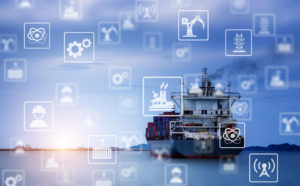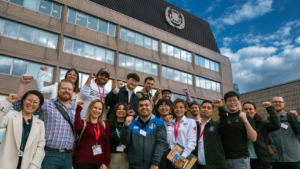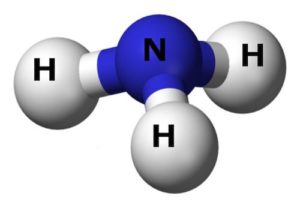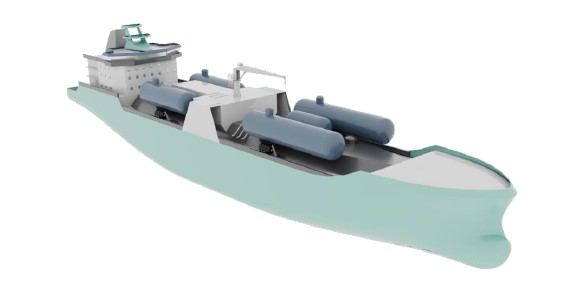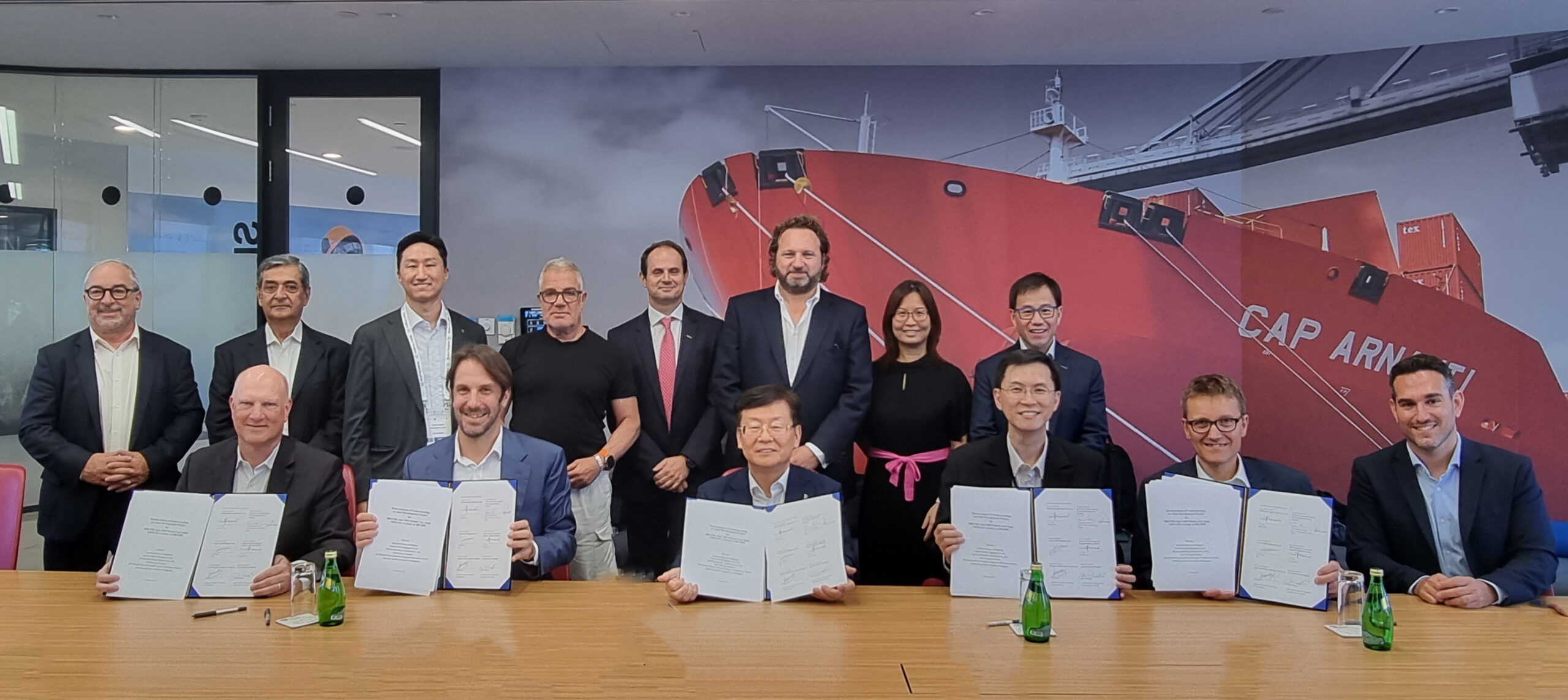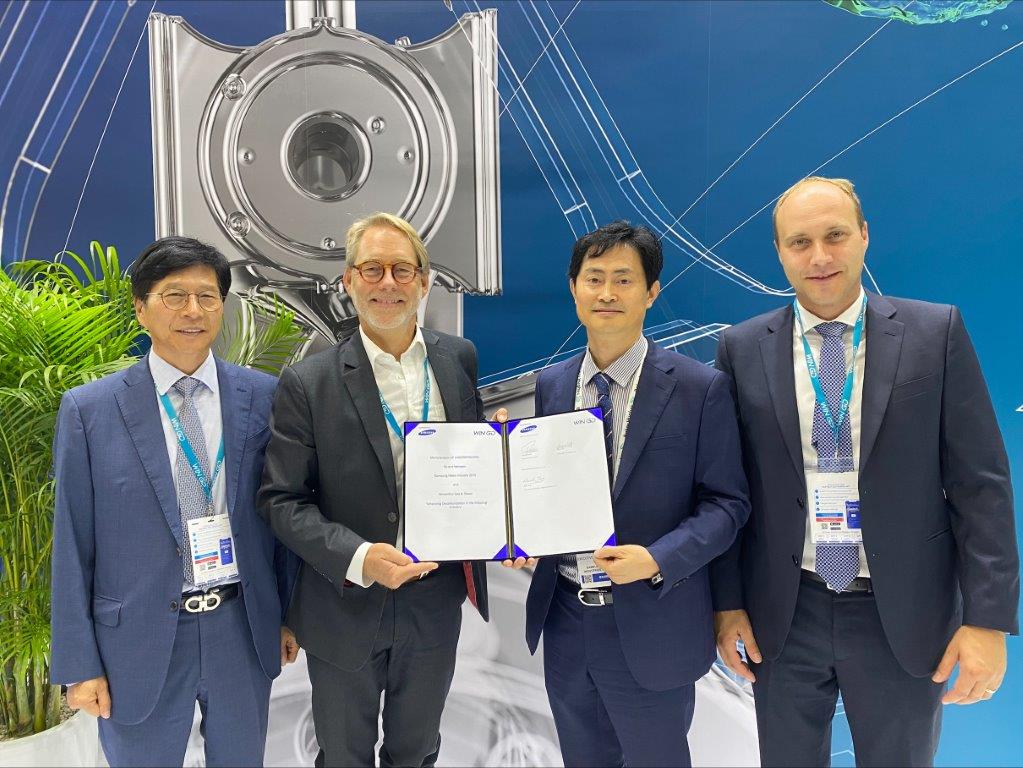The significant safety challenges of using ammonia – including the mitigation of potentially ‘catastrophic’ risks – have been highlighted by a team aiming to develop an ammonia-fuelled gas carrier for delivery in 2024-2025.
The Nordic Green Ammonia Powered Ship (NoGAPS) project aims to develop an ammonia-fuelled multi-gas carrier with ammonia as the principle cargo, plying a route between an ammonia production site in Norway and the Gulf of Mexico. Ammonia producer Yara and gas carrier operator BW Epic Kosan are among the project team.
Project lead Thomas McKenney of the Maersk Mc-Kinney Moller Center for Zero Carbon Shipping noted that NoGAPS aims to address some of the hurdles to the fuel reaching maturity, which include onboard storage and use, fuel management and safety, vessel emissions, regulation and certification.
“Ammonia as fuel has potential but requires maturation,” he said. “As we look at the urgency of decarbonising shipping, we need to balance the desire to mature this pathway with ensuring that all the risks are mitigated.”
The project, co-funded by Nordic Innovation, has completed the first phase of its risk management, conducting a quantitative risk assessment with Lloyd’s Register. By studying proposed vessel designs, the class society was able to develop indicators for location specific risk and individualized risk per annum. These highlight the risks in specific vessel locations and job roles respectively.
The biggest risk locations are the fuel preparation room and tank connection space, which accommodate ammonia-containing equipment and single-walled piping. The crew most at risk are engineering crew, particularly ratings, which is close to the maximum tolerable level of 1 in 10,000 fatalities a year. In a separate hazard identification task, the project identified the rupture of ammonia pipes in the engine room, or of fuel tanks by explosion, fire, impact or dropped object, as catastrophic incidents.
Mitigation measures
In the engine room, mitigation measures include restricted access, ventilation and double-walled piping, with pipe layout minimising the amount of ammonia to which engineers may be exposed. The project is also considering separating the fuel preparation room into separate rooms so that crew working on supply to main engines are not exposed to a leak in piping to auxiliary engines, and vice versa.
Gas leakages in enclosed areas will be mitigated by ventilation, potentially including automatic air recirculation in accommodation, and water curtains that prevent leaked ammonia from spreading to other areas. Fire extinguishing will likely need to use carbon dioxide or foam, as water could increase evaporation of toxic ammonia into the air.
The project also considered the location of the accommodation block. While an aft position above the engine room was seen as subject to higher risk while the vessel is at sea, this was the option chosen. A forward-located block would present more risks at shore and during bunkering, as well as slowing down emergency response and evacuation. A forward block would also add to the cost and complexity of the design.
Safety requirements could be even more onerous for ammonia-fuelled vessels other than gas carriers. NoGAPS locates all fuel handling in the cargo space, meaning that they can be considered under the IGC Code governing construction and equipment for gas carriers. While the code is primarily intended for methane and prohibits toxic products, class societies and flag states can make case-by-case determinations where the design demonstrates equivalent safety to methane cargo.
Fuel will be supplied from four semi-refrigerated tanks on the deck, above the cargo tanks. They will keep liquid ammonia at a pressure of 8 bar. Venting for fuel and cargo will be combined near the front of the ship, with separate venting and fuel reliquefication for cargo handling.
The project envisions a 160m loa vessel powered by a 7,200kW 6G50ME-C9.6 engine developed by MAN Energy Solutions. Auxiliary power is provided by three Wärtsilä 6L20 gensets running on marine diesel oil or potentially biofuel. A shaft generator on the main engine will be able to provide power to both controllable pitch propellers.
Work on the safety concept, along with the final vessel design and business model, will be completed this year. Project partners also include Breeze Ship Design, DNV and the Global Maritime Forum.
Related stories
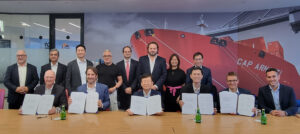
ABS joins landmark project for dual-fuel Ammonia carrier
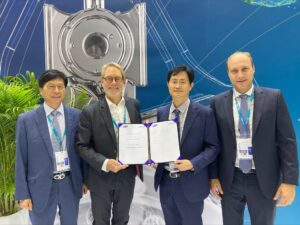
WinGD and Samsung Heavy Industries to cooperate on future fuel applications
